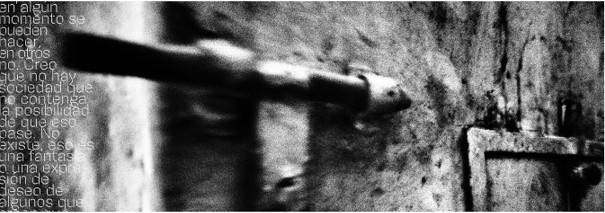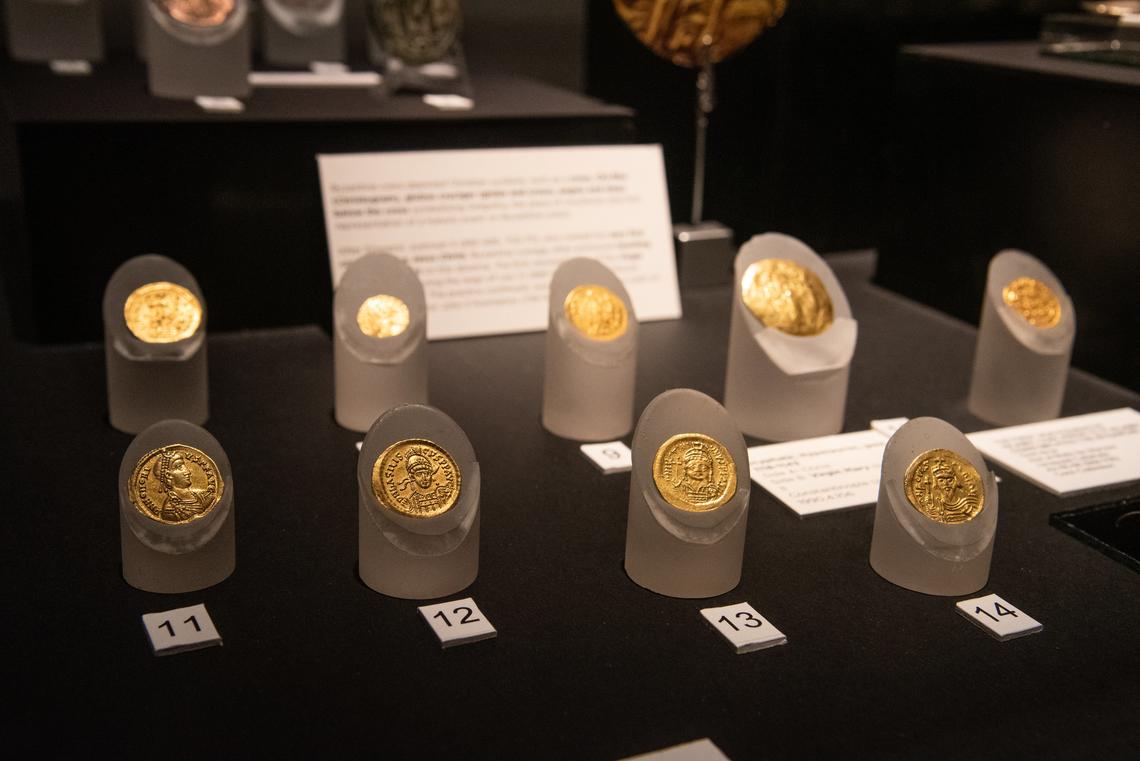June 10, 2019
Ancient currency reveals a deeper understanding of the past

The current exhibition at Nickle Galleries, titled Money and Calgary: The City’s History of Numismatics, celebrates the city’s extensive history of numismatics — the study and collecting of currency. Highlighting some of Canada’s earliest and most prominent collections, donors and collectors, the exhibition shines the light on Calgary’s historic Numismatic Society and the University of Calgary’s renowned Numismatic Collection.
Four graduate students from the Department of Classics and Religion — Scott Coleman, Brittany DeMone, Monica di Rosa and Durga Kale, together with Marina Fischer, numismatics specialist at Nickle Galleries, curated the exhibition by using objects from the Nickle collection to explore the question of “how we learn from the museums and ancient artifacts.”
- Pictured above, from left: Monica di Rosa, Brittany DeMone, Scott Coleman and Durga Kale from the Department of Classics and Religion.
Reflection on the Nickle Numismatic resources
“The craftsmanship and attention to the details on Indo-Greek coinage has always enthralled me,” says Kale. “After I moved to Canada to pursue my graduate studies at the University of Calgary, I was thrilled to see these coins as a part of a vast collection, housed right here on campus! With my background in archaeology and numismatics, I feel at home amidst the Central, South and East Asian coins and artifacts.”
“The Nickle Numismatic Collection is a fundamental resource for exploring material culture and evidence from the past,” explains di Rosa, “specifically the evolution of money and economy throughout the human history. Since I am currently working on Rome’s Greek inscriptions, this collection is of particular interest for my research; it gives me the unique opportunity to explore the connections and influences from different regions of the vast Roman Empire, particularly in terms of little known evidence present both on the coins and in the inscriptions.”
Scott Coleman shares his first encounter with ancient coinage: “I was introduced to the field of numismatics in 2016 at the archaeology site of Çadır Höyük in central Anatolia, Turkey, where my team discovered a few Byzantine coins. I was able to identify one of the coins correctly, and this excitement hooked me and drove my passion for numismatics.”
Brittany DeMone, who studies the visual culture of the Graeco-Roman world, also explains, “I rely on the material remains to understand how ancient peoples viewed their history through their dissemination of visual imagery and symbolism as a means of displaying their achievements, ideologies and beliefs. Since Roman coins were mass-produced, they embody this exceptional archaeological evidence. The Nickle Galleries contains over 5,000 Roman coins, which is an invaluable resource for my work.”

Indo-Greek coins curated by Durga Kale in Money and Calgary: The City’s History of Numismatics.
Brittany DeMone
Reflecting on the learning experience
Through careful design, the coin exhibition project augmented the students’ in-class learning experience by providing the alternative approach to the development of critical thinking and research skills.
“By working directly with the coins, I was able to combine my passion for material culture and my area of expertise,” explains Kale. “For my exhibition display, I selected 14 Indo-Greek coins, which is only a fraction of this invaluable treasure trove. The Money and Calgary exhibition is the product of dedicated teamwork, encouragement and valuable guidance. In the future, I plan to broaden my horizon by engaging more with the ancient and medieval artifacts.”
Similarly, Coleman adds, “From my hands-on work with the Byzantine coins, I have broadened my knowledge of the Byzantine Empire in a very new and exciting way.” Coleman’s research has since progressed towards a new and little explored direction, as he is now investigating how the coins were used in rural agrarian settlements, their impact on the imperial military, and how ordinary people interacted with the military through the economy and their use of coinage.
Erin Kaipainen, senior specialist for experiential learning at the Taylor Institute for Teaching and Learning, confirms what the students are saying. She has directly seen how “experimental learning makes learning real, relevant and meaningful to students” explaining that, “learning by doing contributes to students’ career development as well as the acquisition of skills and knowledge. It can also enhance students’ development as engaged citizens, help them find purpose and direction, and support students in learning how to learn.”
Di Rosa agrees, “The presence of this incredibly large collection has given students in my department a possibility to learn more about history, art, politics and economics, to name just a few areas. This growing interest led the Classics, Religious Studies, Archaeology and Anthropology Graduate Interdisciplinary Group (CRAIG) to organize a forthcoming fall workshop geared towards larger groups of students who want to learn more about this outstanding resource.”
“The Nickle Galleries provides researchers, such as myself, a unique opportunity to access a large dataset of ancient material in Western Canada,” concludes DeMone. “In other words, we are afforded an incredible opportunity to physically hold and see a piece of ancient history within our very own city!”
On June 13, Coleman, DeMone, di Rosa and Kale will reflect further on the experience in their exhibition talk. The exhibition runs until July 20, 2019.
- Thursday, June 13, 2019
- Noon to 1 p.m.
- Gallery Hall, Taylor Family Digital Library
Reception
- Friday, July 12, 2019
- 3 -5 p.m.
- Gallery Hall, Taylor Family Digital Library
The weekly Nickle at Noon event series features related talks and gallery tours. All events are free and open to the public. Learn more by subscribing to updates from Nickle Galleries.

Byzantine coins curated by Scott Coleman in Money and Calgary: The City’s History of Numismatics.
Brittany DeMone
